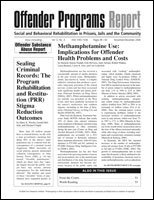Integrated Cognitive Behavioral Treatment in Prison-Based Therapeutic Communities
Author: Harry K. Wexler, Ph.D.; Peter Paolantonio, M.S.S.W..; Christopher Petrozzi, M.A..; Cindy Buraczynski .
Source: Volume 16, Number 06, March/April 2013 , pp.81-84(4)

< previous article |next article > |return to table of contents
Abstract:
Studies have consistently demonstrated a strong relationship between substance use and criminal behavior. One in three property offenders and one in four drug offenders reported obtaining money for drugs as a motive for committing crimes. Without treatment, inmates return to their communities with a high probability of reoffending and continued drug use. In fact, nearly 70% of drug-abusing offenders return to prison within three years of their release. A central goal of this article is to broaden the understanding of prison-based substance abuse treatment and recognize the value of integrating the best of both the therapeutic community (TC) and cognitive behavioral therapy (CBT) approaches for high-risk offenders. Both approaches have strong empirical support. The authors argue that the two models are complementary and, when integrated together, are highly effective for treating high-risk substance-abusing offenders.Keywords: Therapeutic community (TC); Cognitive behavioral therapy (CBT); risk; responsivity
Affiliations:
1: New York University’s Wagner Graduate School of Public Service; 2: Spectrum Health Systems, Inc. ; 3: Spectrum Health Systems; 4: Spectrum Health Systems.